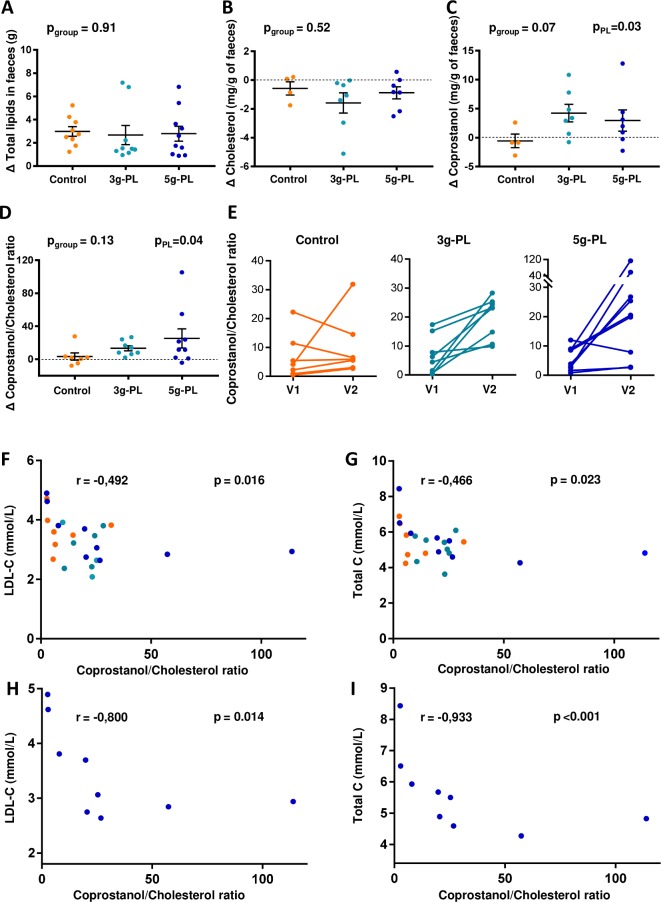Figure 3.
Impact of 4-week intervention with milk polar lipids (PL)-enriched cream cheese on faecal lipids in the VALOBAB-C trial. Faecal loss variations (ΔV2−V1) of total lipids (A), cholesterol (B), coprostanol (C) and coprostanol/cholesterol ratio (D) after daily consumption of 100 g of cheese with or without PL during 4 weeks. Coprostanol/cholesterol ratio before (V1) and after (V2) the 4-week consumption of 100 g of cheese with or without PL (E). Spearman’s correlation between faecal coprostanol/cholesterol ratio and serum low-density lipoprotein-cholesterol (LDL-C) (F) and total cholesterol (C) (G) after (V2) daily consumption of 100 g of cheese with or without PL during 4 weeks (orange: control group, light blue: 3 g-PL group, dark blue: 5 g-PL group). Spearman’s correlation between faecal coprostanol/cholesterol ratio and serum total C (H) and LDL-C (I) at V2 in the 5 g-PL group. Data are indicated as median with IQR. The pgroup is shown to compare intervention effect between the three groups (analysis on ranks on ΔV2−V1); PPL is shown to compare intervention effect between the control group and both PL groups regardless of dose. For technical reasons, analyses performed in centre 1 only, sample size: (A) n=9 (control) to 10 (PL); (B–C) n=4 (control) to 7 (PL); (D–I) n=7 (control) to 9 (PL). NB: regardless of group and visit, the observed faecal losses of cholesterol (range 0.2–1 mg/g faeces) and coprostanol (range 0.45–5.2 mg/g faeces) were consistent with previous published data (cholesterol: 1.88±0.53 to 5.8±1.56 mg/g dry faeces47; coprostanol: 3–27.4 mg/g lyophilised faeces,48 considering that dry matter is ~25% of total faeces weight).

